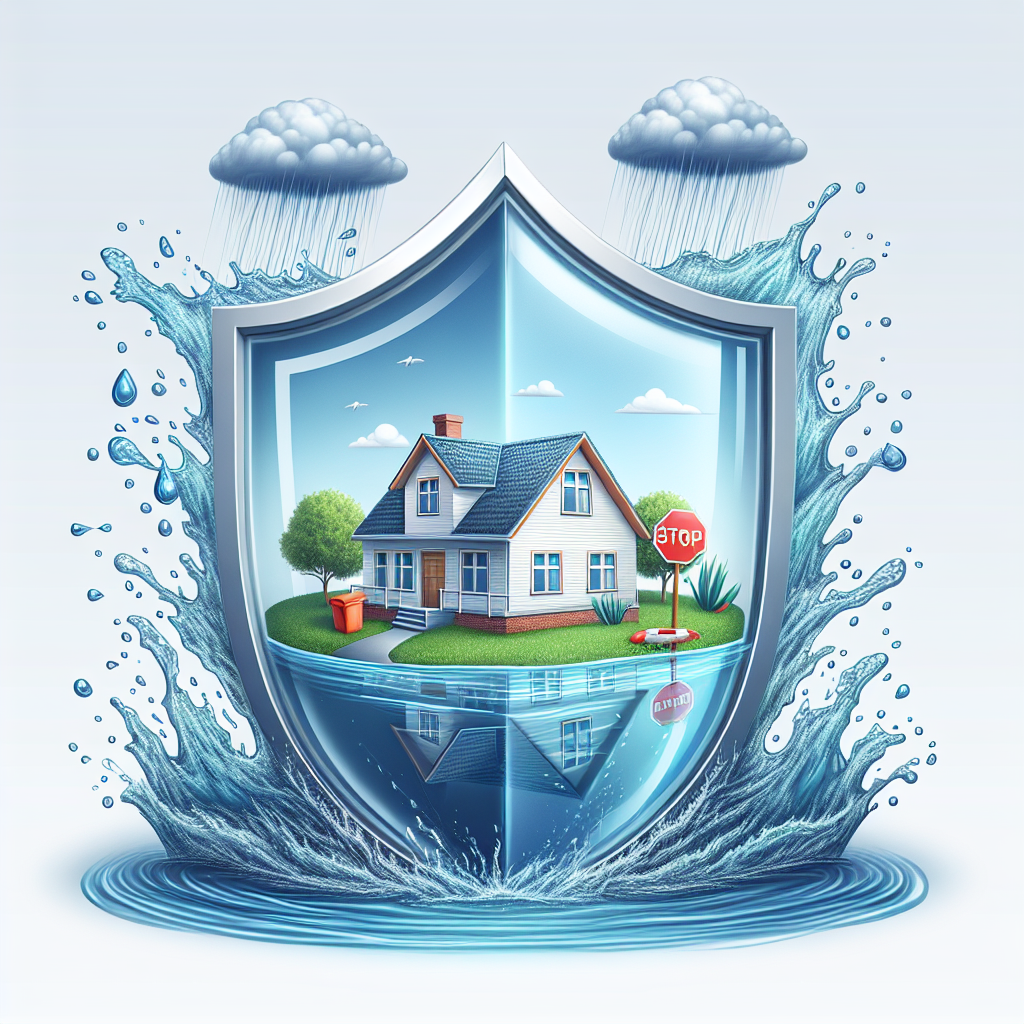Filed under Home Insurance on
Home Insurance and Water Damage: Coverage Explained

Owning a home is a significant milestone and a substantial investment. Protecting that investment is paramount, and that’s where home insurance comes into play. However, when water damage strikes, many homeowners find themselves questioning whether they're adequately covered. Understanding how home insurance and water damage coverage intersect can save you time, stress, and money.
Understanding Home Insurance Basics
Home insurance, also known as homeowner's insurance, is a form of property insurance that covers losses and damages to an individual's house and assets. A typical policy includes coverage for damage to the home itself, loss of personal possessions, liability coverage in case of accidents, and living expense coverage if a temporary relocation is necessary.
Components of Home Insurance
- Dwelling Coverage: Protects the physical structure of your home.
- Personal Property Coverage: Safeguards items inside your home.
- Liability Protection: Covers lawsuits for bodily injury or property damage that you, your family, or pets cause to others.
- Additional Living Expenses (ALE): Covers additional costs of living if you need to live elsewhere while your home is repaired.
While home insurance provides broad protection, not all forms of damage, especially those caused by water, are covered. Understanding these nuances is vital to ensuring comprehensive protection.
How Water Damage Is Covered by Home Insurance
Water damage is a common and costly problem for homeowners. However, the type of water damage and its source significantly influence insurance coverage. Let’s explore the specific scenarios.
Types of Water Damage Covered
Standard home insurance policies typically cover certain types of water damage, including:
- Burst Pipes: Most policies will cover damage from burst pipes or accidental overflows from plumbing systems. This typically includes associated repair costs, minus the deductible.
- Storm-Related Damage: Damage caused by water due to wind-driven rain or water intrusion following roof or window damage during a storm is often covered.
- Appliance Malfunctions: If water damage is the result of a sudden and accidental malfunction of household appliances, you’re likely covered.
Coverage for water damage frequently hinges on whether the damage is sudden and accidental versus gradual and preventable.
Types of Water Damage Not Covered
On the flip side, certain water-related issues typically aren’t covered by standard policies:
- Flood Damage: Floods, whether from overflowing rivers, lakes, or heavy rainfall, are not covered under standard home insurance. Flood insurance is a separate policy that can be purchased if you reside in an area prone to floods.
- Gradual Damage: Water damage that is gradual — such as a slowly leaking roof or pipe — is generally not covered. This is viewed as a maintenance issue that should be prevented by the homeowner.
- Sewer Backups: Damage from sewer or drain backups is typically not covered, unless a specific endorsement is added to the policy.
Thus, distinguishing between different water damage scenarios is crucial when evaluating your home insurance policy to ensure you're adequately protected.
The Role of Endorsements and Additional Coverage
Given the limitations inherent in standard policies, many homeowners opt for additional endorsements or specialized policies. Here are some options worth considering:
Sewer Backup Coverage
Sewer and Drain Backup Coverage: This endorsement is invaluable if your neighborhood has older infrastructure prone to backups or if recent heavy rainfalls increase the risk of sewer systems being overwhelmed.
Flood Insurance
Flood damage can be devastating, both financially and emotionally. As most home insurance policies exclude flood damage, separate flood insurance is essential, especially in high-risk areas. The National Flood Insurance Program (NFIP) provides flood insurance, but private market options are also available.
Additional Water Damage Coverage
Some insurers offer optional coverage extensions specifically tailored for water damage. This can include broader protection against accidental overflows or coverage for specific appliances.
Steps to Take When Water Damage Occurs
Finding water damage in your home needs immediate handling. Here’s a checklist of steps to manage the situation:
- Stop the Source: If safe, turn off the water supply or fix the leak to prevent further damage.
- Document the Damage: Take photos and videos of the affected areas for your insurance claim.
- Notify Your Insurer: Report the damage promptly to initiate the claims process.
- Mitigate Further Damage: Take necessary actions, like drying out the area or removing standing water, to prevent mold or other secondary damage.
- Keep Receipts: Save all repair and replacement receipts to support your claim.
Swift action not only minimizes damage but also bolsters the strength of your insurance claim.
Expert Opinions and Industry Trends
As climate patterns grow increasingly unpredictable, the frequency of water-related claims escalates. Industry experts recommend reassessing home insurance policies regularly to adapt to these changes. Recent trends indicate a rise in demand for water detection technology, which can alert homeowners to leaks before substantial damage occurs.
A representative from a leading insurance provider suggests homeowners consider these advancements: “Integrating smart home technology, like water leak sensors, offers added peace of mind and can sometimes lead to premium discounts due to the lowered risk of extensive damage.”
Conclusion
Decoding the intricacies of home insurance and water damage coverage is vital in safeguarding your property. While a standard home insurance policy provides a foundational safety net, recognizing its limits with respect to water damage is essential. By investing in additional coverage where necessary and maintaining proactive repair and maintenance routines, you can enhance your home's protection.
To ensure you’re fully covered, it may be wise to consult with an insurance expert. They can offer tailored advice based on your home's specific needs and location. Remember, forewarned is forearmed; being informed today can save you from financial stress tomorrow.
As water damage continues to be a prevalent risk, understanding your home insurance coverage not only brings peace of mind but also assures that your home remains a secure haven for years to come.





